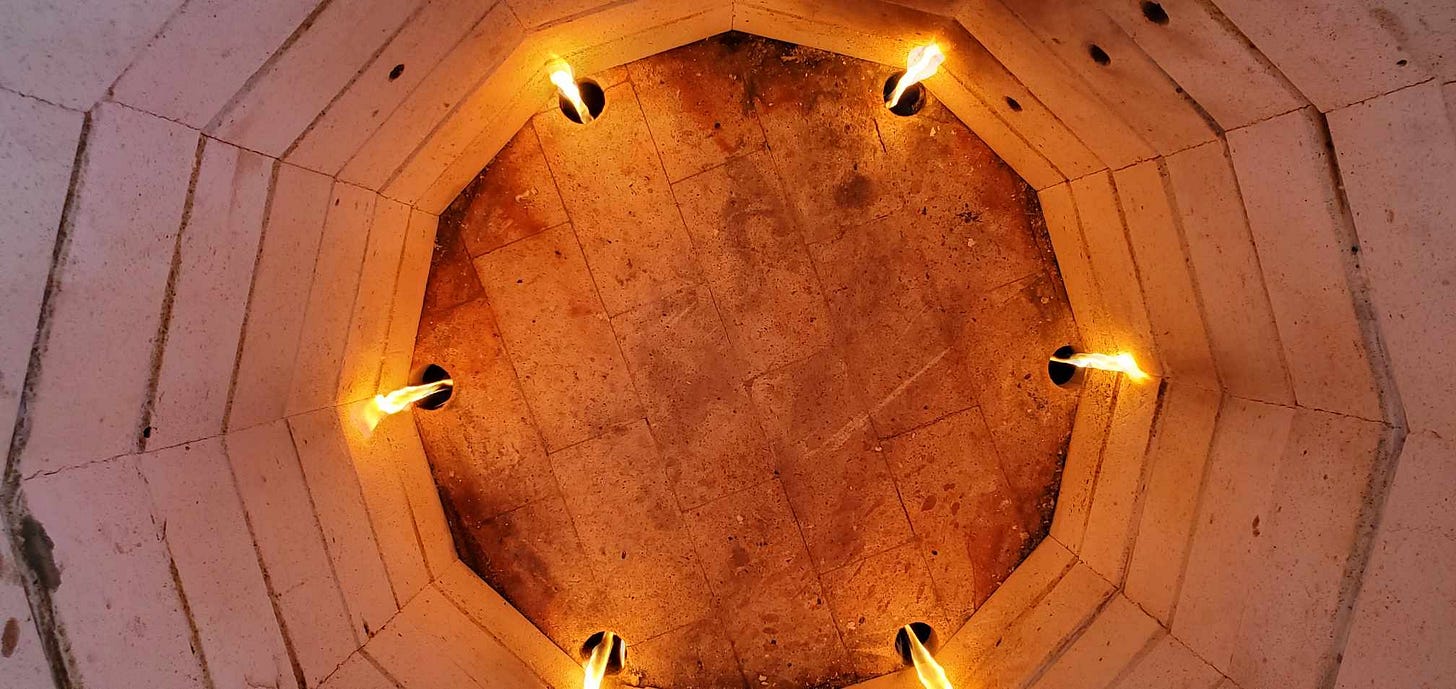Many may never get to see the bottom of a kiln. There might be a shelf they leave in to make things easier to load. You might be a kiln floor working in the bottom. Kiln floors are important. They hold the rest of the work up, supporting the shelves and all the wear on them. You may not be noticed much of the time. However, if you collapse or cave, they would miss you if you were gone. The whole kiln load and work would be lost. Those who know how important kiln floors are check, on them quite often. For those who never look, an image of a kiln floor is included here.
The kiln floor is where all the debris from the lid, shelves, and loading falls. There might be shelf cones, bits of loose brick, holes from glaze drips, and, if the kiln has not been fired for some time, even mouse nests. It’s good to have a preventive maintenance schedule, pull that bottom shelf, and pay a visit to the kiln floor. Maybe see if there are any cracks showing. Be sure things are clean. Following the metaphor, practice empathy, generosity, and gratitude with those who might be your kiln floor. No need to overdo it, and wear out your stay. They know how to do their job of holding things up; they may just want to be acknowledged, seen, and heard. They might be your linchpins.
Kiln floors might not always be level. The bricks might be chipped and a piece of kiln shelf may need to be put under the posts to keep the shelves from rocking. There might be holes from drops of glaze melting, though little by little, as a result of those above not paying attention to detail or from lack of training and inexperience. Shards from exploded pots might rain down. It’s the kiln floor that takes all the weight and stress from what happens above. But somehow the floor has held together. Training others and educating the rest about what happens in the bottom might be helpful. It puts everyone on the same page as to what each section of the kiln does and what the goal of the whole might be.
The kiln floor may outlast the lid. It’s comforting to know that at times, the floor of the kiln might be more important. It is easier to replace lids on most kilns than floors. Even with all the abuse and heavy workloads, the kiln floors tend to hold up even if there is an over-fire or meltdown. After surviving a failed firing or meltdown due to lack of experience, attention, or care the floor can do amazingly well at holding up all the melted pots and shelves.
I hope you do good work today. I hope that you are able to make a few good pieces better. Maybe it’s not so bad being on the bottom. It’s fine to smile to yourself. Give yourself a pat on the back if you happen to be a kiln floor. I see you. I look in there often and appreciate the hard and stressful events you have to endure every firing. We got this!




